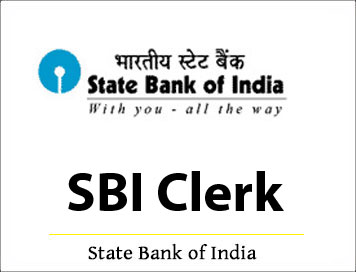
(Paper) SBI Clerk Exam Paper - 2014
:: REASONING ABILITY ::
Directions (81 – 85): In these questions, relationship between different elements in shown in the statements.
The statements are followed by two conclusions
Given answer (1) if only Conclusion I is true
Given answer (2) if only Conclusion II is true
Given answer (3) if either Conclusion I or II is true
Given answer (4) if neither Conclusion I nor II is true
Given answer (5) if both Conclusions I and II are true
81. Statements: A ≥ B = C ≤ D
Conclusions:
I. A ≥ C
II. D > A
82. Statements: P < Q = M ≥ N < O
Conclusions:
I. Q > O
II. P < M
83. Statements: T > R < S = U > V; U ≥ M
Conclusions:
I. M ≥ R
II. T ≤ M
84. Statements: Q ≤ P ≥ M ≤ N = T, N ≤ O
Conclusions:
I. O ≥ T
II. O ≤ Q
85. Statements: D > E = F ≤ C ≥ P < Q
Conclusions:
I. E < Q
II. F ≥ P

Directions (86 – 90): Study the following information carefully and answer the questions given below.
In a certain code language, bank for my conductor is written as ‘ya ri vi pa’.
‘for conductor is my’ is written as ‘ri vi pa da’
‘my computer is yours is written as ‘da vi pi du’
‘it yours tablet’ is written as ‘yu du ca’
86. Which of the following is the code for ‘conductor’?
1) da
2) ri
3) ya
4) pa
5) ri or pa
87. Which of the following may represent ‘ya pi du’?
1) my computer tablet
2) yours computer bank
3) yours tablet bank
4) computer for bank
5) my tablet conductor
88. What is the code for ‘my’?
1) ri
2) pa
3) du
4) vi
5) da
89. What does the code ‘pa’ stand for?
1) for
2) conductor
3) my
4) bank
5) Cannot be determined
90. In the code language ‘my computer’ can be coded as:
1) pi vi
2) pi da
3) vi ri
4) pi ya
5) du pi
Directions (91 – 95): In each question below are two statements followed by two conclusions numbered I and II. You have to take the two given statements to be true even it they seem to be at variance form commonly known facts and then decide which of the given conclusions logically follows from the two statements disregarding commonly known facts.
Give answer (1) if only conclusion I follows
Give answer (2) if only conclusion II follows
Give answer (3) if either conclusion I or conclusion II follows
Give answer (4) if neither conclusion I nor conclusion II follows
Give answer (5) if both conclusion I and conclusion II follows
91. Statements: Some apples are oranges
Some oranges are potatoes
Conclusions:
I. No orange is apple
II. At least some potatoes are oranges
92. Statements: No pen is pencil
No pencil is ink
Conclusions:
I. Some ink are pens
II. Some pens being ink is a possibility
93. Statements: No elephant is horse
All bulls are horses.
Conclusions:
I. No bull is elephant
II. Some bulls being elephant is a possibility
94. Statements: Some books are papers
No appear is bottle
Conclusions:
I. No bottle is book
II. Some bottles being book is a possibility
95. Statements: Some mobiles are tablets
No tablet is personal computer
Conclusions:
I. No personal computer is mobile
II. Some personal computers are mobiles
Directions (96 – 100): Study the following information carefully and answer the questions given below:
Ten people are sitting in two parallel rows containing five people each, in such a way that there is an equal distance between adjacent people. In Row -1, V, W, X, Y and Z are seated and all of them are facing south. In Row -2, H, I, J, K and L are seated and all of them are facing north. Therefore, in the given seating arrangement each member seated in a row faces another member of the other row. Y is sitting to the immediate left of W. H is to the immediate left of person who faces V. L is sitting third to the right of J. Z is at the extreme end of the line. X faces L. W is sitting second to the right of the person who faces K. J is at the extreme end of the line.
96. Who amongst the following is sitting second to the left of V?
1) Y
2) X
3) W
4) Z
5) None of these
97. Who amongst the following sit at the extreme ends of the two rows?
1) I, J, W, Z
2) X, Z, J, L
3) W, X, K, J
4) Z, Y, J, H
5) W, Z, J, L
98. Which of the following statements is true regarding K?
1) K sits third to the right of J
2) K is not an immediate neighbour of H
3) K sits second to the left of I
4) K faces Y
5) There are three persons to the left of K.
99. Which of the following statements is true regarding J?
1) J is at extreme right position
2) J is sitting between H and L
3) J faces V
4) K is an immediate neighbour of J
5) None is true
100. Who among the following sits exactly between X and Y?
1) W
2) V
3) Z
4) Cannot be determined
5) There is no person between X and Y